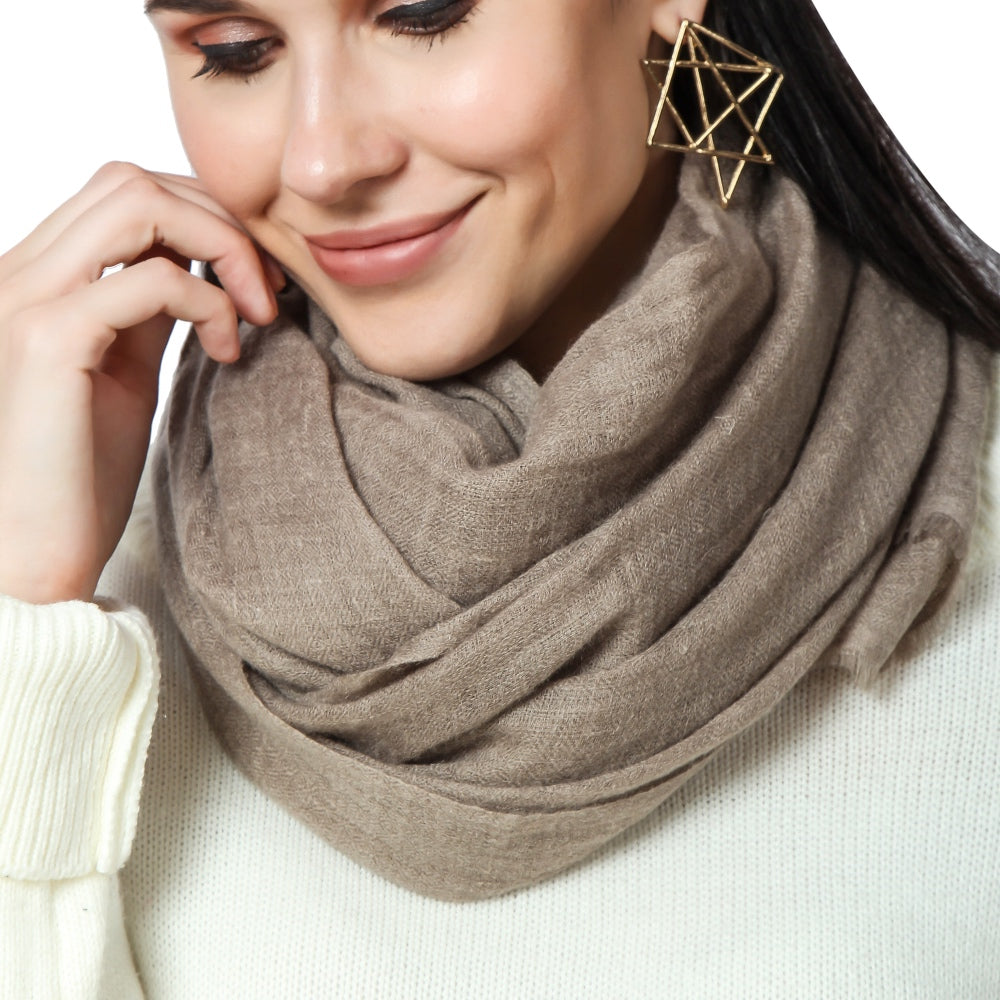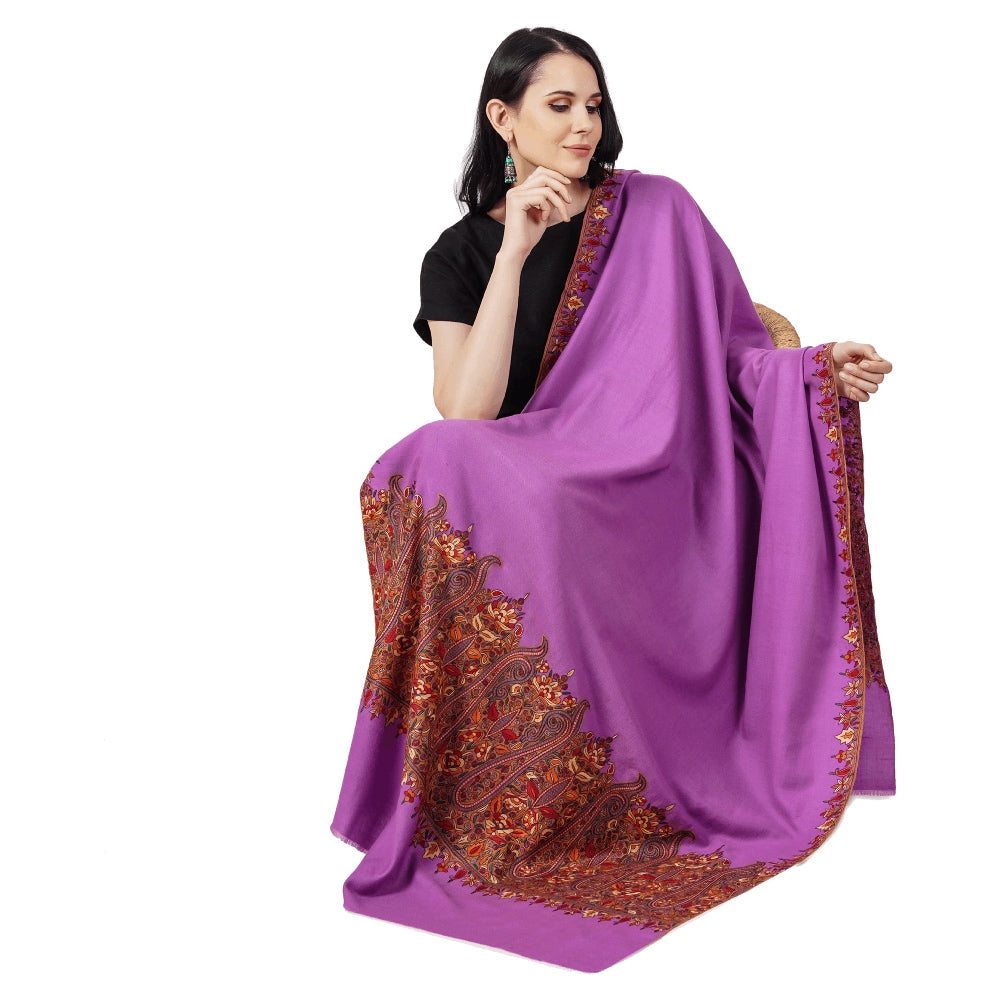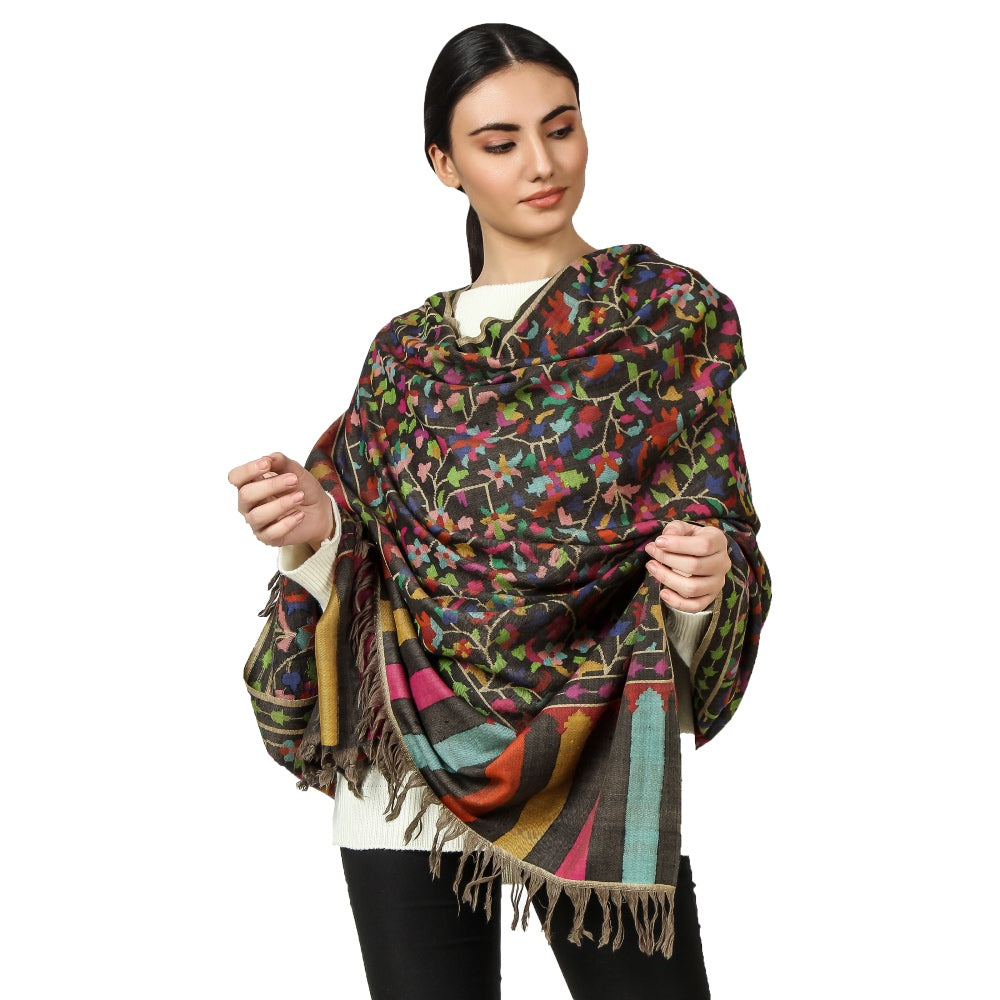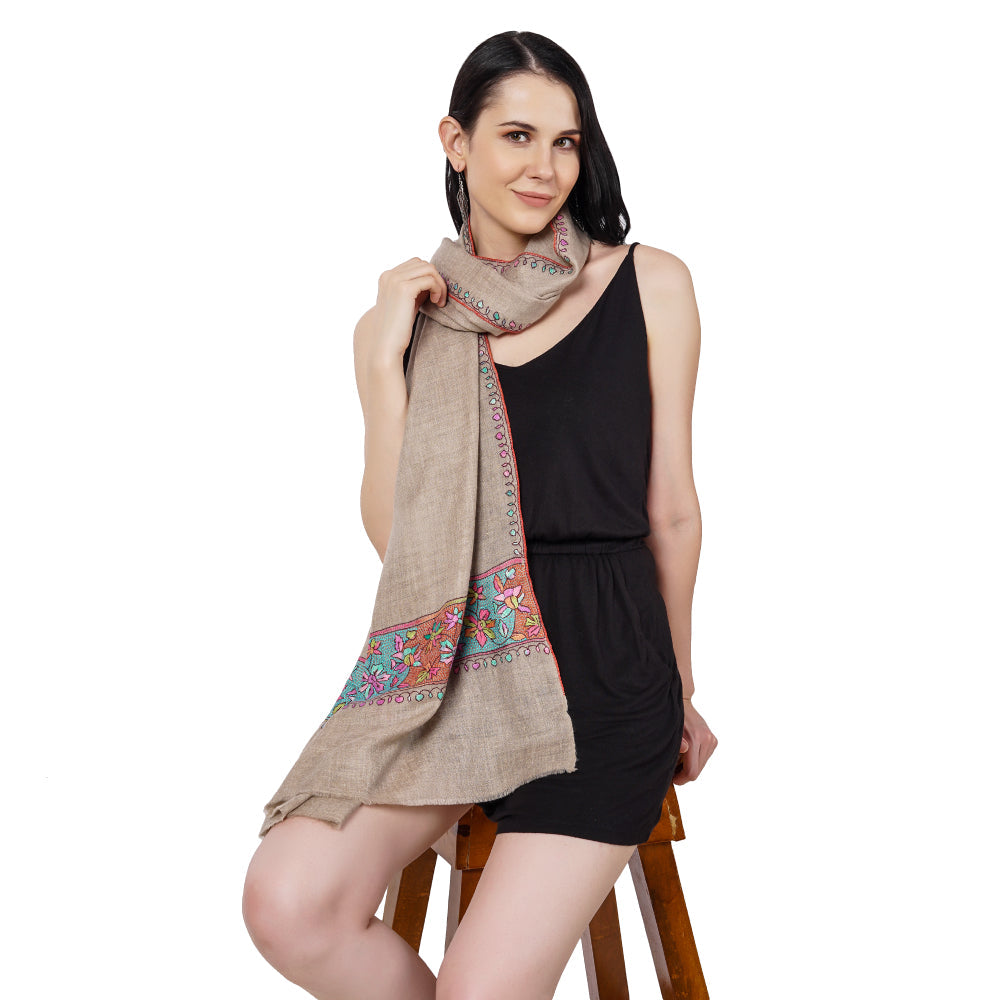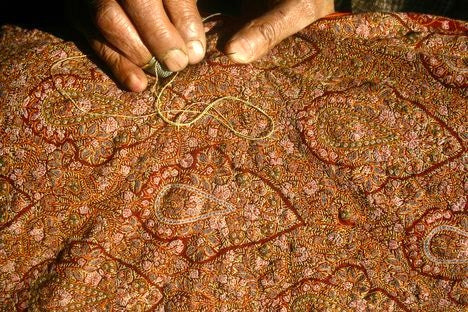
How are Pashmina Shawls Made? A Comprehensive Guide
Share
WHAT IS A PASHMINA SHAWL?
Pashmina Shawls are luxurious and soft, made from the wool of the Pashmina goat, which is native to the Himalayan region. Pashmina wool is renowned for its exceptional warmth and lightweight texture, making it one of the most prized materials in the fashion industry. The history of Pashmina Shawls dates back to ancient times, where they were worn by royalty and elites as a symbol of wealth and status. It was during the 15th century that Pashmina Shawls gained global recognition when they were gifted to European royalty by the Mughal Emperor Akbar. Pashmina Shawls have since then become a symbol of luxury and elegance. Today, Pashmina Shawls are highly valued for their exquisite quality, craftsmanship, and unique texture, making them a sought-after fashion accessory for all occasions.

Understanding Pashmina Wool

Pashmina wool is a type of fine wool that is obtained from the undercoat of the Pashmina goat. The Pashmina goat is primarily found in the high altitude regions of the Himalayas, including India, Nepal, and Pakistan. Pashmina wool is known for its exceptional warmth and softness, making it one of the most sought-after materials in the fashion industry. Pashmina wool is often compared to cashmere wool, but there are a few differences between the two. Cashmere wool is obtained from the undercoat of the cashmere goat, which is native to the high altitude regions of Mongolia and China. While both Pashmina and cashmere are similar in texture and warmth, Pashmina is considered to be finer and softer than cashmere. To identify real Pashmina wool, one should look for the trademarked "Pashmina" label or certification from the Pashmina Testing and Quality Certification Centre. Additionally, real Pashmina wool will be soft, lightweight, and have a natural sheen.
Also read: Where is Pashmina Goat found?
Production of Pashmina Wool

The production of Pashmina wool is a time-consuming process that involves several stages of production. The first step in the production process is the collection of Pashmina wool from the undercoat of the Pashmina goat. This is usually done in the spring when the goats shed their winter coat. The wool is then sorted and cleaned to remove any impurities such as dirt and dust. This process is done by hand to ensure that the wool is not damaged in any way. Once the wool has been sorted and cleaned, it is ready to be spun. Pashmina wool is typically spun by hand using a traditional spinning wheel. The spinning process is a delicate process that requires great skill and attention to detail. The wool is spun into a fine, lightweight yarn that is then used to make Pashmina Shawls. The entire production process of Pashmina wool is labor-intensive and can take up to several weeks or months to complete, depending on the quality and quantity of the wool being produced. However, the end result is a luxurious and high-quality material that is prized by fashion designers and consumers alike.
Also read: Weaving a Pashmina Shawl
Dyeing of Pashmina Wool

The process of dyeing Pashmina wool is an important step in the production of Pashmina Shawls. There are two types of dyes that are commonly used for dyeing Pashmina Shawls: natural dyes and synthetic dyes. Natural dyes are made from plant extracts, and they produce vibrant colors that are long-lasting. Synthetic dyes, on the other hand, are made from chemicals and can produce a wider range of colors than natural dyes. The method of dyeing Pashmina wool varies depending on the type of dye being used. Natural dyes are typically applied to the wool by hand using a method called "tie-dyeing." This involves tying the wool in a specific pattern before applying the dye to create a unique design. Synthetic dyes, on the other hand, are usually applied using a machine that immerses the wool in a dye bath. There are several challenges in dyeing Pashmina wool, including the delicate nature of the material and the need to maintain its softness and luster. Additionally, because Pashmina wool is a natural material, the dyeing process can be affected by factors such as temperature, humidity, and the pH level of the water used in the process. Despite these challenges, the dyeing process is a crucial step in the production of Pashmina Shawls, and it is what gives them their vibrant colors and unique designs.
Also Read: The reign of Heirloom Pashmina
Weaving Pashmina Shawls

The process of weaving Pashmina Shawls is an intricate and time-consuming process that requires great skill and attention to detail. Traditional Pashmina Shawl weaving techniques involve the use of a handloom and are done entirely by hand. The weaver uses a shuttle to pass the Pashmina yarn through the warp threads to create the design of the shawl. The process is slow and meticulous, with each shawl taking several days or even weeks to complete. Modern Pashmina Shawl weaving techniques involve the use of power looms, which can speed up the process considerably. However, the use of power looms can also result in a loss of the unique qualities and characteristics of handwoven Pashmina Shawls. Embellishments are often added to Pashmina Shawls to enhance their beauty and value. These embellishments can include embroidery, beading, and even the use of precious stones. The embellishment process is also done by hand and requires great skill and attention to detail. The end result is a luxurious and unique shawl that is not only beautiful but also carries with it the rich cultural heritage of the Pashmina wool industry.
Also read: Weaving a Pashmina Shawl:
Different Types of Pashmina Shawls

There are various types of Pashmina Shawls available in the market, each with its unique characteristics and features. Pashmina Shawls can be categorized based on their origin, with some of the most popular being Kashmiri Pashmina Shawls, Nepalese Pashmina Shawls, and Mongolian Pashmina Shawls. They can also be classified based on their size and shape, with options ranging from traditional full-size shawls to smaller stoles and scarves. Another way to categorize Pashmina Shawls is based on their design and style, which can include anything from traditional Paisley patterns to contemporary geometric designs. Additionally, Pashmina Shawls can be customized to suit specific occasions, with options such as wedding shawls, evening shawls, and everyday wear shawls. The wide variety of options available makes Pashmina Shawls a versatile and popular choice for people all around the world.
Also read: What is Pashmina Cashmere?
Caring for Pashmina Shawls

Pashmina Shawls are known for their softness, warmth, and beauty, and they can last for many years with proper care. One important aspect of caring for Pashmina Shawls is proper storage. It is recommended that Pashmina Shawls be stored in a dry, cool place, away from direct sunlight and moisture. When not in use, they should be folded and stored flat to prevent creasing and stretching. When it comes to cleaning Pashmina Shawls, it is best to avoid washing them in a washing machine, as this can damage the delicate fibers. Instead, it is recommended to have them dry cleaned by a professional who specializes in cleaning delicate fabrics. If handwashing is necessary, it should be done gently and with cold water, using a mild detergent. One common mistake to avoid when caring for Pashmina Shawls is using harsh chemicals or bleach, as this can damage the fibers and cause the shawl to lose its softness and beauty. By following these simple care instructions, you can help ensure that your Pashmina Shawls remain in excellent condition for years to come.
Also read: How to Clean Cashmere
Tips for Buying Pashmina Shawls

Buying a Pashmina Shawl can be a significant investment, and it's important to ensure that you're getting an authentic and high-quality product. One way to identify authentic Pashmina Shawls is to look for the "Pashmina" label, which indicates that the shawl is made of 100% Pashmina Wool. You can also check the texture of the shawl - authentic Pashmina Shawls are incredibly soft and lightweight, with a slightly fuzzy texture. When buying Pashmina Shawls, it's important to consider factors such as the size, color, and design, as well as the quality of the weaving and the level of detail in the embellishments. Additionally, it's recommended to buy from a reputable seller who specializes in Pashmina Shawls and can provide information about the shawl's origin and production process. You can also consider purchasing from a fair trade or sustainable brand, which ensures that the artisans who make the shawls are paid fairly and work in safe and ethical conditions. Finally, you can find Pashmina Shawls in specialty stores, online marketplaces, and even while traveling in countries such as India, Nepal, and Pakistan, where they are traditionally made. By following these tips, you can ensure that you buy a Pashmina Shawl that meets your needs and expectations.
Also read: Which region is famous for Pashmina Shawl?
Conclusion
In conclusion, Pashmina Shawls are a valuable and beautiful addition to any wardrobe, and they have a rich history and production process that makes them truly unique. Throughout this article, we have explored the definition and history of Pashmina Shawls, the process of producing and dyeing Pashmina Wool, and the various techniques used to weave and embellish these shawls. We have also discussed how to care for Pashmina Shawls, tips for buying them, and the different types available based on their origin, size and shape, and design and style. Overall, Pashmina Shawls are a symbol of luxury and elegance, and they make a wonderful investment for anyone who values quality and craftsmanship. We recommend taking the time to learn about the production process and care instructions, as well as buying from a reputable seller or fair trade brand, to ensure that you get an authentic and high-quality Pashmina Shawl that will last for years to come.

